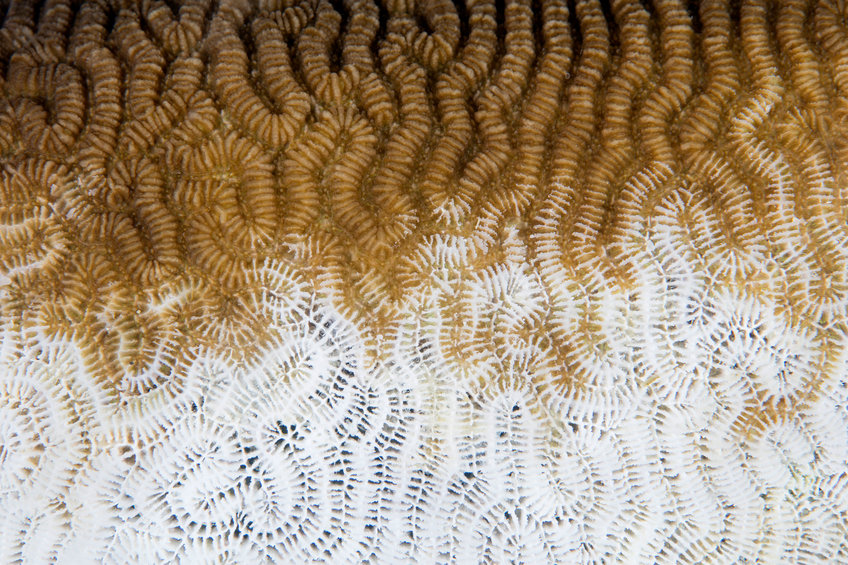In many areas of the oceans, coral reefs are losing their colour and threatening to die - the cause is the high temperatures of the world's oceans
Since the beginning of 2023, mass bleaching of coral reefs has been occurring in over 50 areas around the world. Due to the high temperatures in the world's oceans the corals expel single-celled algae that they need to survive. Since 15 April 2024, the US National Oceanic and Atmospheric Administration and the International Coral Reef Initiative have been talking about the fourth global coral bleaching. It is already the second event in a decade.

Coral Bleaching around the Maldives in the Indian Ocean in April, 2019.
© Reinhard Dirscherl/ picture alliance
For years, climate models have been predicting that coral reefs will bleach more frequently and more severely as the ocean continues to warm. The exceptionally warm seawater temperatures are caused, among other things, by the burning of fossil fuels and deforestation. These bleaching events are now occurring more and more frequently. "The intervals between bleaching events are getting shorter and shorter, so the corals don't have enough time to recover," says Mathilde Godefroid, who researches coral reefs at the Max Planck Institute for Marine Microbiology in Bremen.
When seawater temperatures are higher than normal for a longer period of time, corals begin to suffer from heat stress. The high temperatures disrupt the symbiosis between the corals and the microalgae (zooxanthellae) living in their tissue. The algae then produce molecules that damage both the algae themselves and the coral. In response, the corals expel their symbiotic partners to minimise the damage. Although this helps the coral cells for a short time, it harms them in the long term, as the microalgae cover up to 90 per cent of the coral's energy requirements through photosynthesis.
Corals lose their colour

Coral Bleaching at the Solomon Islands in the Pacific Ocean in 2017.
© Ethan Daniels/ WaterFrame/ picture alliance
The algae also give the corals their colour When they are shed, the coral tissue becomes transparent and the white skeleton underneath is revealed: the corals therefore appear to bleach. "If the ambient temperatures return to normal relatively quickly, the corals can rebuild their symbionts and survive bleaching, even if this naturally puts them under a lot of stress. However, if the increased temperatures persist or other stress factors are added, the corals can no longer recover. Then they die," explains Mathilde Godefroid.
Global coral bleaching events last occurred in 1998, 2010 and from 2014 to 2017, the last of which affected more than half of all reefs. In the Great Barrier Reef off the east coast of Australia, half of the reefs died as a result. According to Terry Hughes from James Cook University in Australia, this is the fifth time in eight years that the Great Barrier Reef has been affected by this phenomenon. This year, 75 per cent were even affected by bleaching.
The extent and speed of global warming are decisive for the future of the world's coral reefs: with a temperature increase of 1.5 degrees, 70 to 90 per cent of the reefs are expected to disappear. With an increase of two degrees, as could be achieved by 2050, almost all of the world's reefs will die off. However, the pace of warming is also important: a slower rise in temperature gives corals the opportunity to adapt. "So if we manage to limit warming and take local protective measures, we may be able to preserve some reefs or some resilient coral species. But the window of opportunity for action is getting smaller. There is only one way to preserve healthy coral populations in the long term: stabilising ocean temperatures by reducing our greenhouse gas emissions," says Mathilde Godefroid.






